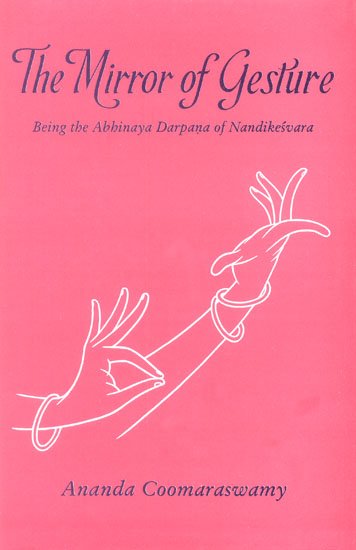Abhinaya-darpana (English)
by Ananda Coomaraswamy | 1917 | 16,981 words | ISBN-13: 9788121500210
The English translation of the Abhinaya-darpana (“the mirror of gesture”) by Nandikeshvara: an encyclopedic manual of the art of gesticulation. It belongs to a wide range of literature known as Natya-shastra: the ancient Indian art of dramatic performance, theatrics, dance and music. The Abhinaya Darpana is an abridgement of the Bharatarnava, a m...
Chapter 17 - Hands denoting Devas
Hands that indicate the forms which accord with the character and actions of Brahmā and other Devas:[1]
Brahmā: left hand Catura, right hand Haṃsāsya.
Śambhu: left hand Mṛga-śīrṣa, right hand Tripatāka.
Viṣṇu: Tripatāka with both hands.
Sarasvatī: left hand Ardha-candra, right hand Sūci.
Pārvatī: Ardha-candra with both hands, the left upward, the right downward, making Abhaya and Varada (Fear not, and Charity).
Lakṣmī: two Kapittha hands held at the shoulders.[2]
Vijñeśvara: two Kapittha hands held forward.
Śanmukha: left hand Triśūla, right hand Śikhara, held upwards.
Manmatha: left hand Śikhara, right hand Kaṭaka.
Indra: Tripatāka hands crossed.
Yama: left hand Pāśa, right hand Sūci.
Nairṛti: Khaṭvā and Śakaṭa hands.
Varuṇa: left hand Śikhara, right hand Patāka.
Vayu: left hand Ardha-patāka, right hand Arāla.
Kuvera: left hand Padma, right hand Gada.
Footnotes and references:
[1]:
Showing Deva hands is referred to in a subsequent section as ‘deva-vibhāvana.’
[2]:
‘Held at the shoulders’ is to be understood in the case of all the Deva hands unless otherwise indicated.
